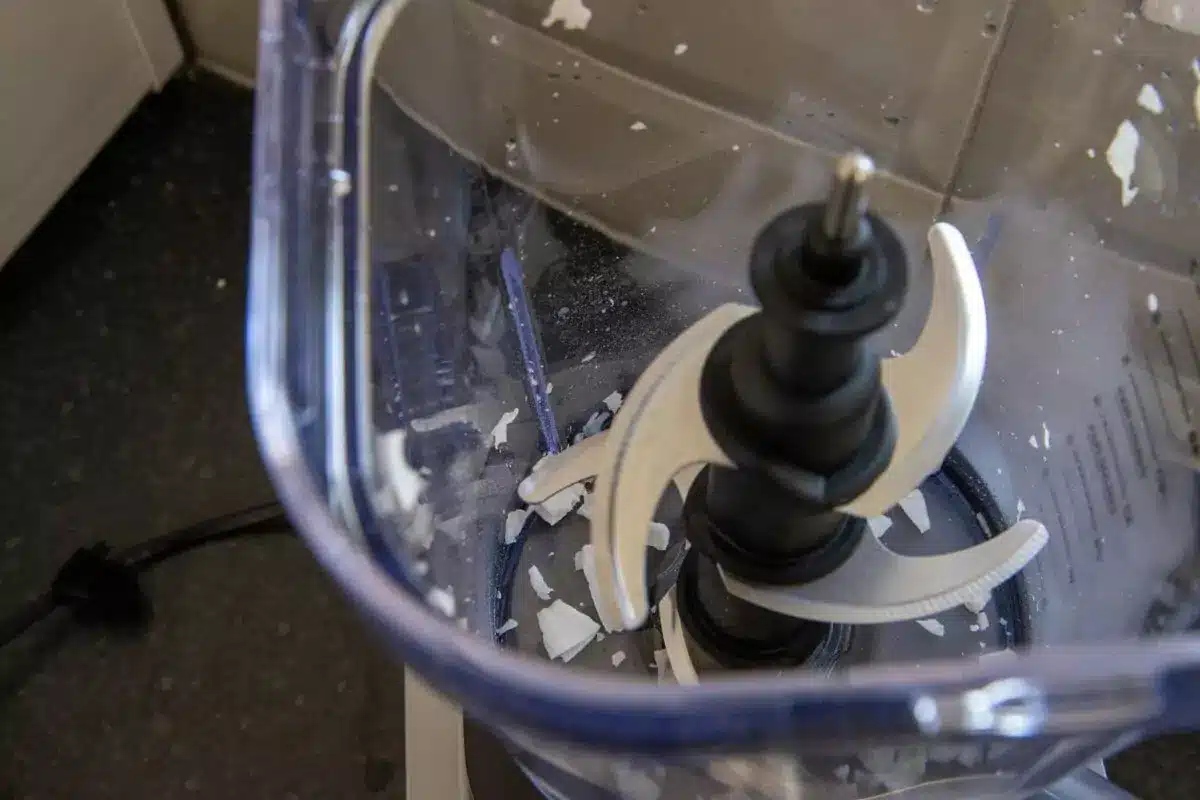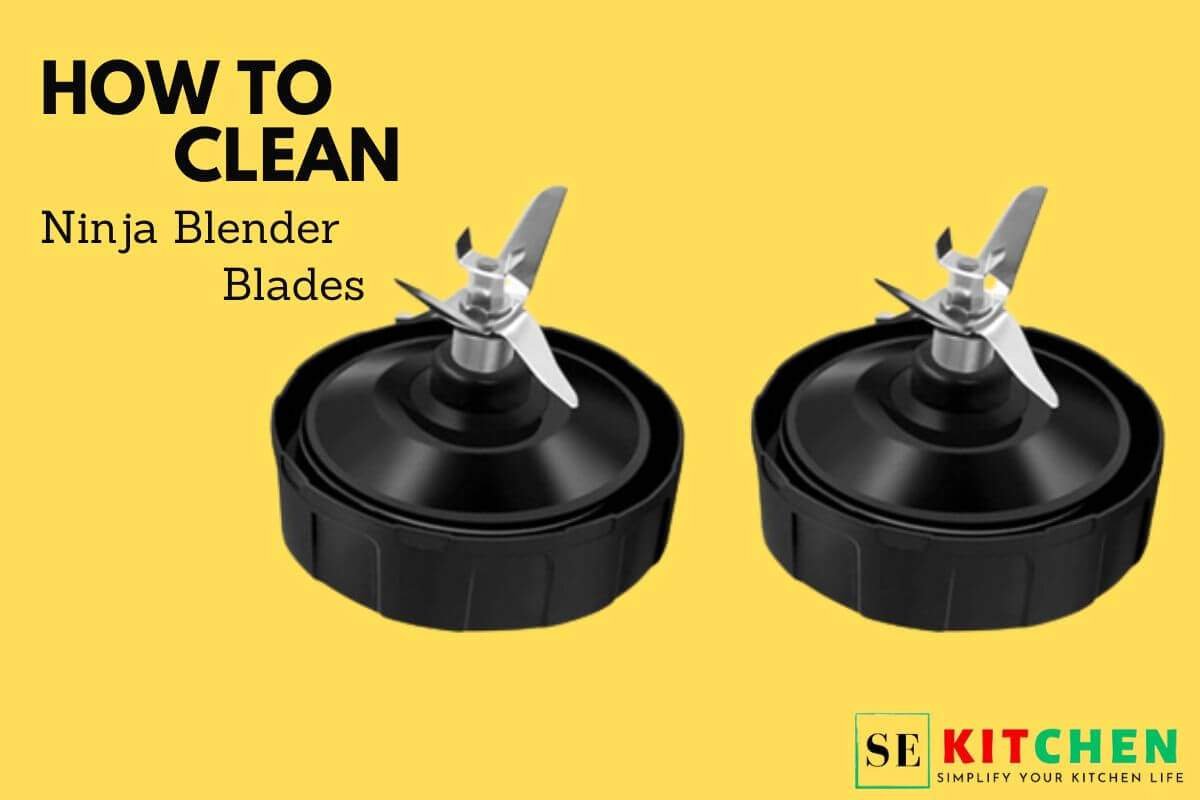How to Clean Ninja Blender Blades: A Comprehensive Guide
How to Clean Ninja Blender Blades? It is one of the most common questions from Ninja Blender users. Ninja blenders have revolutionized the way of preparing food. It has made kitchen tasks more efficient and enjoyable. However, to maintain the performance of your Ninja blender, it’s crucial to clean it regularly.
A clean blender ensures a good blending experience and maintains the flavors of your recipes. Additionally, a well-maintained blender reduces the risk of bacterial growth. So, cleaning your blender regularly is crucial.
In this comprehensive guide, I will show you the step-by-step process of cleaning your Ninja blender, specifically focusing on the blades, jar, and blender base.
Importance of Cleaning Your Ninja Blender Blades
Cleaning the blades of your Ninja Blender, not only maintain their sharpness but also ensures its longevity.
After each use, food residues can accumulate on the blades. This can lead to unpleasant odors or even bacterial growth. It also affects their efficiency and potentiality.
By properly cleaning your Ninja blender blades, you can maintain their sharpness.
Before diving into the cleaning process, let’s go over some essential precautions and measures to keep in mind:
- Handle with Care: Ninja blender blades are sharp. So, Always use caution when cleaning them.
- Avoid Sharpening: If you notice any damage to the blades, don’t try to sharpen them. Instead, you can replace the damaged assembly.
- Proper Assembly: Never place the blade assemblies at the base without attaching the cup. Because this can lead to damage or improper functioning of the blender.
Cleaning the Blade Assembly
The blade assembly is the heart of your Ninja blender. So, it requires special attention during cleaning. To begin the cleaning process, you’ll first need to disassemble the blade assembly from the blender jar.
Cleaning your Ninja blender blades doesn’t require any complicated detergents or solutions. All you need is some dish soap and hot water.
Fill a sink or basin with warm water. Add a small amount of dish soap. Submerge the blades in the soapy water and let them soak for a few minutes. This will loosen any food particles or residue. Use a sponge or toothbrush to scrub away any stubborn bits on the blades. Be sure to clean both the blades and the area where they attach to the jar.
If you encounter stubborn stains or residue, you can use a toothbrush soaked in white vinegar to scrub the blades. The acidity of the vinegar will help break down any tough residue and leave your blades looking shiny and clean.
Dealing with Extremely Dirty Blades

If your Ninja Blender blades are extremely dirty and the above method doesn’t suffice, you can try using Polident tablets.
These tablets are typically used for denture cleaning. They contain antibacterial agents that help to remove tough stains and dirt from the blender blades. Here’s how to clean extremely dirty blades with Polident tablets:
- Fill a basin with water and add two Polident tablets.
- Submerge the blades in the solution and allow them to soak for a while.
- After soaking, rinse the blades thoroughly with water. Use a toothbrush to scrub off any remaining dirt or stains.
It’s worth noting that some people may have busy schedules that make it challenging to disassemble the blades for cleaning. In such cases, you can clean the blades without separating them from the jar.
Just fill your blender with lukewarm water. Drop two Polident tablets into the jar. Then, allow the blades to soak in the water and Polident solution for about an hour. After soaking, use a toothbrush to scrub off any dirt or stains from the blades. Rinse thoroughly with water.
By following these cleaning methods, you can easily clean your Ninja Blades in no time.
How to Take Apart Ninja Blades
At times, you may need to take apart the Ninja blades for a more thorough cleaning. Though the specific method may vary depending on your Ninja blender model. But the general process remains the same. Here’s a step-by-step guide on how to take apart Ninja blades:
- Remove the blender jar from the base.
- At the bottom of the jar locate the blade assembly.
- Depending on your model, you may need to twist, unscrew, or press a button to release the blades from the assembly.
- Once the blades are detached, follow the cleaning instructions mentioned earlier to clean them thoroughly.
- After cleaning, reassemble the blades onto the assembly.
- Place the blade assembly back into the blender jar and twist or lock it into place.
- Your Ninja blender is now ready to be used or stored until the next blending session.
Note: Before beginning always unplug your Ninja blender and make sure it is turned off.
How do you lubricate a Ninja blender blade?
Properly lubricating your Ninja Blender blade is essential to maintain its peak performance and prolong its lifespan.
To begin, carefully disassemble the blade first. Then clean it using mild soap and water. Once dry, apply a food-safe lubricant to the blade’s rotating components.
Silicone-based lubricants work best as they reduce friction and resist high temperatures. Be sure not to over-lubricate. Cause excess grease can contaminate your recipes. Regularly lubricating your blender blade will ensure smooth blending and optimal efficiency. And will make your culinary adventures a breeze.
How to Clean the Ninja Blender Jar
While cleaning the blades is essential, it’s equally important to clean the blender jar itself. Over time, the jar can develop stains and odors that can affect the overall cleanliness of your blender.
Lemons are a natural cleaning agent that can help remove tough stains and odors from the blender jar. Here’s how to clean the jar:
- Fill the blender jar with lukewarm water and add a few drops of dish soap.
- Drop some coarsely chopped lemons into the jar. Securely close the lid and blend the mixture on low speed for about a minute.
- After blending, rinse the blender jar thoroughly with water.
The acidic properties of the lemon will help remove stains and leave your jar fresh and clean.
How to Clean the Ninja Blender Base
It’s quite important to clean the base of your Ninja blender. The base can accumulate dust and food particles over time. This can affect its overall appearance and performance. Here’s how to clean the Ninja blender base:
Before cleaning the base, always unplug the blender. Soak a sponge in warm soapy water. Then wipe the base of the blender with it. Pay special attention to any spills or stains. After cleaning, dry the base with a clean cloth to prevent any moisture buildup.
How do you get stains out of a Ninja Blender
Over time, the jar can develop tough stains and odors that can affect the overall cleanliness of your blender. Vinegar and Baking soda are excellent cleaning agents that can help remove tough stains and odors from the blender jar. Here’s how you get stains out of a Ninja Blender:
Make a paste by mixing vinegar and baking soda. Apply the paste to the stained areas of the blender jar. Allow the paste to sit for a few minutes, or even overnight for tougher stains. After that, rinse the jar thoroughly to remove the paste and any remaining stains.
By following these methods, you can remove stains from your Ninja blender jar looking it clean and fresh.
Conclusion
Cleaning and maintaining your Ninja blender is essential for optimal performance and longevity. With regular cleaning and care, your Ninja blender will continue to serve you delicious smoothies, purees, and more. By following the step-by-step cleaning process outlined in this guide, you can keep your Ninja blender in a pristine condition.
So, say goodbye to Gunk and hello to a sparkling clean Ninja blender!
Frequently Asked Questions
Can you use vinegar to clean a blender?
Yes, you can use vinegar to clean your blender. Mixing equal parts of white vinegar and water and then running the blender for a short time helps remove stains, odors, and buildup. Afterward, rinse the blender thoroughly with water.
What to do when blender blades get dull?
When blender blades become dull, it’s best to replace them with new ones. Dull blades can affect blending performance and may not give you the desired results. Check the manufacturer’s instructions or contact their customer support for replacement options.
Can I use bleach to clean my blender?
No, it is not recommended to use bleach to clean your blender. Bleach is a harsh chemical that may damage the blender’s components and leave harmful residues. Stick to safer cleaning options like vinegar or baking soda.
Does baking soda remove brown stains?
Yes, baking soda is effective at removing brown stains in your blender. Mixing a tablespoon of baking soda with warm water and blending it for a few seconds can help get rid of stubborn stains. Remember to rinse the blender thoroughly afterward.
Can you wash Ninja blender parts?
Yes, you can wash Ninja blender parts. Most Ninja blenders come with removable and dishwasher-safe parts, making cleaning a breeze. Check the user manual for specific instructions on how to clean your particular model.
Can you clean a Ninja with apple cider vinegar?
Yes, you can clean your Ninja blender with apple cider vinegar. The acidic properties of apple cider vinegar help break down grime and buildup. Dilute apple cider vinegar with water, run the blender for a short time, and then rinse it thoroughly.
Can you use oven cleaner on a Ninja?
No, you should never use oven cleaner on a Ninja blender or its parts. Oven cleaners are too harsh for kitchen appliances and can cause damage. Stick to mild and food-safe cleaning agents like vinegar or baking soda.
